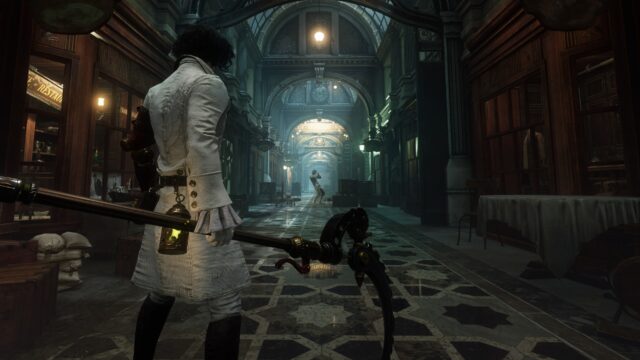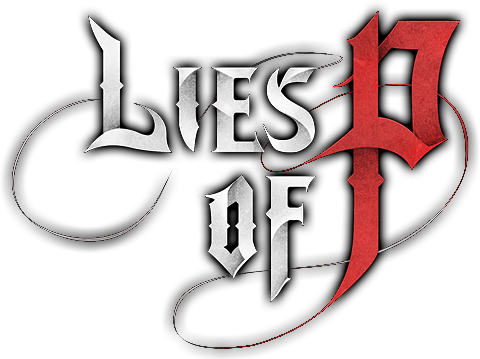Lies of P Review
Welcome to the Dollhouse
Along with leaving its mark on the industry and cementing an RPG subgenre, 2015’s Bloodborne satisfied me so thoroughly that it still stands as the uncontested pinnacle of my personal Soulsborne mountain. Even now, eight years later, I hardly would have expected to become supplanted; that is, until I sat down to play through Neowiz and Round 8 Studio’s Lies of P. I’m a little surprised to write these words, but I daresay that Lies of P is such a masterfully crafted hardcore gothic action RPG that it could even be said to outdo FromSoftware at its own game.
Lies of P is loosely based on The Adventures of Pinocchio by Italian author Carlo Collodi. Though the game’s narrative is original, quite a few characters, locations, and themes from the literary work have made their way into the game, along with some Easter Eggs for those who are familiar with the story. The story is set in the fictional city of Krat, a large and opulent beacon of the Industrial Revolution, full of lavish opera houses, glitzy theaters, well-stocked storefronts, and craftsmen’s shops. But the city also has its dark underbelly where the poor eke out a desperate existence amid the twisting alleyways and cobbled streets.
Players step into this world as the titular puppet P, awakened in an empty train car by a mysterious ephemeral voice seeking his help. It turns out that Krat no longer resembles the bustling hub of progress it once was. The city’s unfortunate human population has been cruelly set upon, decimated by a painful and deadly Petrification Disease, only to be kicked while already down when the city’s puppets — intricate clockwork constructions acting as a cheap and convenient workforce for menial labor — inexplicably slaughtered their onetime masters in an uprising known as the Puppet Frenzy. Despite being constructed with a fail-safe directive that should have made rebelling against their human masters impossible, the city’s puppets continued the human’s extermination started by the Petrification Disease, brutally picking off those who managed to survive the epidemic.
These events set a grim and melancholy tone for the game. Players navigate through streets littered with decomposing carcasses and wreckage, artifacts of former life strewn about haphazardly during the humans’ frenzied attempts to flee the deathtrap Krat has become. The city is a vast spiderweb of pathways, patrolled by all manner of predators both big and small. Though P begins his journey facing off against the frenzied puppets, there are plenty of other horrors lurking in the city’s darker recesses. While the macabre tone is not new to the genre, what sets it apart is how it is elevated by juxtaposing it with truly grandiose locales and set pieces. This creates a final product that’s equal measures jaw-dropping elegance and gruesome perversion. The palatial white-marble opera house is home to some of its most twisted freaks, while the cobblestone street leading to its entrance is patrolled by a hulking nightmare-fuel clown puppet that is as formidable a foe as any boss.
Experiencing the city of Krat in all its broken glory is an absolute treat, and the act of striking out and exploring every nook and cranny is one of the game’s most outstanding qualities. After fighting through an early-game area and besting its boss, P arrives at Hotel Krat, a gathering place for the city’s few surviving souls which becomes his base of operations. From here, the journey winds all throughout — and even underneath and outside of — the city, including a factory where a rogue foreman is refusing to shut down the assembly line of murderous puppets; the Lorenzini Arcade, a cavernous indoor shopping mall that doubles as a tip of the hat to Collodi’s true identity; a gothic mountaintop cathedral and the subterranean catacombs beneath it; and many more. Lies of P utilizes the genre’s trademark shortcuts that double back to previous areas to great effect, including some very surprising ones that are impossible to see coming. Unraveling the intricate level layouts in this way is supremely satisfying, to say the least.
Standing front and center amid the level exploration is a smart and deep combat system that expertly builds on what the best in the genre have built before it while adding a variety of welcome and well thought-out wrinkles. There are three base character builds to choose from (Balance, Dexterity, or Strength), with each affecting P’s starting stats and, most importantly, what type of weapons he’s most compatible with. Though weapon variety first appears limited — each starting weapon only differs in what type of sword it is — the pool that can be found, looted, and purchased over the course of the game is large and varied, giving players a ton of creative options to experiment with.
The true genius of the weapon system doesn’t present itself until P gains the ability to assemble his own weapons. Every weapon in the game — excepting a few special, powerful armaments — is made up of a blade and handle, which can be freely taken apart and reassembled in any number of possible combinations. For example, it is possible to affix the blade of a greatsword that scales well with P’s stats to a polearm handle, granting it further reach at the cost of speed and maneuverability of the original greatsword. Meanwhile, attaching a dagger blade to a mechanized piston handle creates a spear with motorized stabbing capabilities. The possibilities to tinker around with are vast, and since blades and handles can be upgraded separately, creative players will have a field day going to town on enemies in new and inventive ways. Each blade and handle also has a special ability, called a Fable Art. Newly created weapons keep their inherent Fable Arts, resulting in all-new ability combinations, allowing players to create new tools of death on the fly to fit any situation.
As a puppet, P also has access to Legion Arms, mechanical appendages that grant even further combat capabilities. Legion Arms can also be upgraded, with each having three unique ability expansion tiers, and all-new Legion Arms can even be crafted from scratch with the right materials. Legion Arms allow P to do things like launch a rope to winch distant enemies closer to him, fire off explosive rounds, plant proximity mines, and more. Defense isn’t an afterthought; players will acquire new puppet parts to buff up P’s defensive stats, and are interchangeable on the fly. Certain situations may require better defense against slashing rather than piercing attacks, or better protection against elemental damage. Finally, P’s body itself can be upgraded to improve things like his available amount of health flask uses, increased chances for a critical hit, or more powerful stagger attacks to throw enemies off balance. The amount of interlocking variables and moving parts are more than just a welcome addition, adding a ton of depth to what initially presents as a straightforward “swing sword to hit enemy” combat system.
Make no mistake: having plenty of combat options on hand is an absolute requirement. Lies of P can be brutally, unforgivingly challenging. Apart from the garden variety servants, maids, chimney sweeps, and Carabiniere patrolling the streets — not to mention the numerous mini-bosses — full-scale boss encounters can, and often do, represent considerable skill checks. Early-game bosses often consist of automatons of hulking proportions and visually striking designs. As the game progresses, their ranks expand to include other monstrosities, with the vast majority consisting of multi-phase fights. The game demands precise reflexes to best its intense challenges. Learning attack patterns and pulling off a split-second Perfect Guard to survive otherwise unblockable attacks unscathed is absolutely vital. It’s not uncommon to spend hours entering the same boss arena over and over again, only to finally crawl out the other end with only the barest sliver of health remaining, P’s body as beaten and bruised as the player’s ego. Even though most bosses allow for summoning an AI-controlled co-op partner, having a combatant on the field who cannot learn and adapt to the boss’s combos and behaviors often makes going in solo a better option.
Boss designs are deftly woven into the narrative of a particular area, often reduced to twisted incarnations of the once-friendly machines they were, built to make life in Krat just a little more joyful. As players approach the end of the game’s opening area, they enter an impromptu carnival ground, presumably abandoned during the Puppet Frenzy, empty booths lining the streets while cardboard clown cutouts jeer disturbingly. Hiding among the decor intended to delight little children is the maniacal Parade Master, a giant machine in a ring master’s uniform who now uses his body as a battering ram. As P wears down his health, the Parade Master resorts to severing his own head to use as a makeshift flail, giving him longer reach and a whole new moveset. Every boss encounter offers something new and exciting to contend with, making every hard-earned victory feel like a well-deserved cherry on top of an already satisfying combat cake of twisted metal and cruel intentions.
There’s a lot more to Lies of P than its difficulty, and it’s clear the designers have taken careful stock of various aspects of the Soulslike formula in order to keep what works and improve what came up short. For example, blowing through all available health flasks might spell doom in other games, but Lies of P actually encourages aggressive play when out of healing options by allowing a single health charge to be fueled back up by attacking enemies. Another welcome, albeit minor, tweak to the formula is the fact that any acquired Ergo (Lies of P‘s in-game currency) dropped during a boss encounter now await the player just outside the boss arena, negating some of the peril of entering a challenging fight while carrying such precious cargo. The game’s story never ascends to great literary heights, but is a lot more open and accessible instead of hidden in cryptic snippets of easy-to-miss text. The side quests that exist are fun scavenger hunts that may yield new items or at least a memorable distraction. The most prominent of these is spread across the entire game, as P is contacted via public telephones by a mysterious voice calling himself the King of Riddles who, like many of the game’s NPCs, is a nod to the game’s literary source material.
Accompanying the talented voice actors who bring these characters to life is an outstanding score. The music earns high marks during normal gameplay and frequently elevates itself further with beautiful flourishes. Players can collect vinyl records that can be played back on Hotel Krat’s gramophone player. These records contain gorgeous, full-length songs and instrumental tracks that feel tailor-made to accompany any stay in a beautiful, historical city such as Krat — songs about love and loneliness, or longing for the sunny warmth of a sandy beach in days long gone by. Even outside the hotel, musical surprises await. When carefully ascending a cobblestoned rise in the heart of downtown Krat, dodging explosive shells lobbed by turrets from both sides, a lovely song suddenly filled the air, seemingly ripped from a daydream of a Parisian outdoor café. This added a touch of serenity to the looming threat of death all around.

In a nod to the source material’s author, the Lorenzini Arcade is that one time a Soulslike takes place in a shopping mall.
Not only does it sound great, Lies of P looks the part, too. The aforementioned enemy and boss designs, and gorgeous cinematics that introduce (and often intersperse) each boss encounter all look fantastic. Even in the moment-to-moment flow of gameplay, the game is a visual marvel. A staged display of mutilated puppet bodies strewn about the stage of an amphitheater invites P for a closer inspection; the arresting skyline of Krat when looking off into the distance from a high vantage point; even something as simple as the display window of an abandoned storefront that deserves more than just a cursory glance. The dedication and attention to detail in Lies of P are nothing short of impressive.
My time with Lies of P was exactly the intense and gratifying experience that I hoped for. As one who holds Bloodborne in the highest regard as one of FromSoftware’s finest achievements, I found myself absolutely enamored with Round 8 Studio’s unique, clever take on the formula. While the game broadly functions similarly to the best the Soulslike genre has to offer, Lies of P‘s tweaks and refinements are so masterfully planned out and implemented that they make every moment of gameplay a pleasure. From the dopamine hits provided by exploring the labyrinthine level layouts, to the extreme elation of finally besting a challenging boss, there’s nary a moment of Lies of P‘s meaty campaign that feels wasted or unsatisfactory. With a post-credits teaser hinting at a second incredible twist on another literary classic lying in wait, the future looks bright for this new addition to the genre. Lies of P, welcome to the top!
Disclosure: This review is based on a free copy of the game provided by the publisher.


A dark and brooding world that's immensely gratifying to explore
The amount of inherent creativity and flexibility in weapon system is incredible
Combat system has tons of smartly implemented moving parts that all complement each other
Top-notch presentation really takes one to the streets of a Victorian European town
AI-controlled partners simply can't measure up to a real-life co-op buddy
Many boss fights can act as extreme skill checks, potentially causing some frustration










Recent Comments